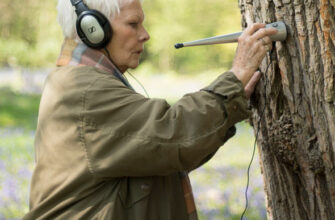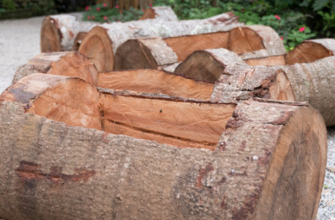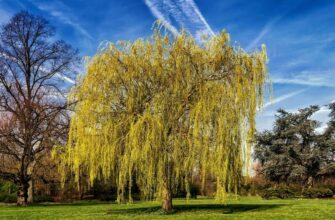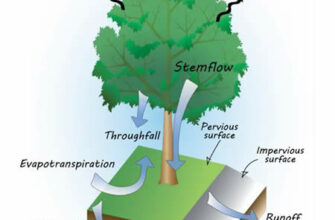
- Fostering Future Tree Planters
- Fostering Future Tree Planters
- Cultivating a Green Generation
- Planting Trees for a Sustainable Future
- Why Tree Planting is Important
- The Benefits of Tree Planting
- How to Get Involved in Tree Planting
- The Role of Education in Tree Planting
- Tree Planting Programs for Children
- Tree Planting Initiatives in Schools
- Community Tree Planting Projects
- Corporate Social Responsibility and Tree Planting
- Tree Planting in Urban Areas
- Tree Planting for Wildlife Conservation
- Tree Planting and Climate Change
- Tree Planting Techniques and Best Practices
- Tree Planting Tips for Success
Fostering Future Tree Planters
As the world grapples with the urgent need to address climate change and preserve our natural resources, fostering a new generation of tree planters is essential. Trees play a crucial role in mitigating the effects of climate change, providing habitat for wildlife, and improving air and water quality. By cultivating a green generation of tree planters, we can ensure a sustainable future for our planet.
Fostering future tree planters begins with education and awareness. It is important to teach young people about the importance of trees and the benefits they provide to our environment. By instilling a love for nature and a sense of responsibility for its preservation, we can inspire the next generation to take action.
Hands-on experiences are also crucial in fostering future tree planters. By involving young people in tree planting projects, we can give them the opportunity to connect with nature and witness the impact of their actions firsthand. These experiences not only teach practical skills, but also instill a sense of pride and ownership in caring for the environment.
Furthermore, it is important to provide opportunities for young people to become leaders in tree planting initiatives. By empowering them to take the lead, we can foster a sense of agency and inspire them to make a difference in their communities. Through mentorship programs and youth-led projects, we can cultivate a new generation of passionate and knowledgeable tree planters.
In conclusion, fostering future tree planters is essential for creating a greener and more sustainable future. By educating, providing hands-on experiences, and empowering young people, we can cultivate a green generation that is equipped to address the challenges of climate change and preserve our natural resources.
Fostering Future Tree Planters
Planting trees is not just about the present, but also about the future. By fostering a love for trees and nature in young people, we can cultivate a green generation that will continue to care for and protect our planet.
One way to foster future tree planters is through education. By teaching children about the importance of trees and their role in the environment, we can instill in them a sense of responsibility and a desire to take action. This can be done through interactive and hands-on activities, such as tree planting workshops or field trips to local forests.
Another way to foster future tree planters is by providing them with the tools and resources they need to make a difference. This can include access to tree planting kits, educational materials, and opportunities to get involved in community tree planting projects. By empowering young people to take action, we can inspire them to become lifelong advocates for trees and the environment.
Furthermore, it is important to lead by example. By demonstrating our own commitment to tree planting and environmental stewardship, we can inspire young people to follow suit. This can be done through initiatives such as community tree planting events, where children can see firsthand the impact that their actions can have on the environment.
In conclusion, fostering future tree planters is crucial for the long-term health and sustainability of our planet. By educating, empowering, and leading by example, we can cultivate a green generation that will continue to plant and care for trees well into the future.
Cultivating a Green Generation
Fostering a green generation is essential for the future of our planet. By nurturing young planters, we can ensure that the next generation is equipped with the knowledge and skills to care for and protect our environment.
Tree planting is a valuable activity that can be incorporated into educational programs to instill a love for nature and a sense of responsibility towards the environment. Encouraging young individuals to become tree planters not only helps to improve the air quality and combat climate change, but also fosters a sense of connection and appreciation for the natural world.
One way to cultivate a green generation is through hands-on experiences and outdoor learning opportunities. By engaging children and youth in tree planting activities, they can develop a deeper understanding of the importance of trees in ecosystem health and the role they play in mitigating climate change.
Furthermore, providing educational resources and workshops on tree planting can empower young people to take action and make a positive impact in their communities. By teaching them about the benefits of trees, such as providing shade, reducing energy consumption, and improving water quality, we can inspire them to become active participants in creating a greener future.
Collaboration between schools, community organizations, and local governments is crucial in fostering a green generation. By working together, we can create a supportive environment that encourages young individuals to become tree planters and champions for environmental sustainability.
In conclusion, cultivating a green generation is vital for the future of our planet. By fostering a love for nature and providing opportunities for hands-on experiences and education, we can inspire young individuals to become passionate tree planters and advocates for a greener future.
Planting Trees for a Sustainable Future
Planting trees is an essential part of fostering a sustainable future. Trees play a crucial role in providing numerous environmental benefits, such as improving air quality, reducing soil erosion, and mitigating climate change. By planting trees, we can contribute to the preservation of our planet for future generations.
One of the key aspects of fostering a green future is educating and engaging young people in tree planting initiatives. By teaching children about the importance of trees and involving them in planting activities, we can instill a sense of responsibility and environmental stewardship from an early age. This will help create a generation that values and cares for trees, ensuring their preservation for years to come.
Tree planting also offers numerous social and economic benefits. By creating green spaces and urban forests, we can enhance the quality of life in communities, providing recreational areas and improving mental health. Additionally, tree planting initiatives can create jobs and stimulate local economies, contributing to sustainable development.
Furthermore, planting trees is a powerful tool for combating climate change. Trees absorb carbon dioxide, one of the main greenhouse gases responsible for global warming, and release oxygen, improving air quality. By increasing the number of trees through widespread planting initiatives, we can help mitigate the effects of climate change and create a more sustainable future.
In conclusion, planting trees is a vital step towards fostering a sustainable future. By educating and involving young people, we can cultivate a green generation that values and cares for trees. The environmental, social, and economic benefits of tree planting make it a powerful tool for creating a more sustainable world. Let us come together and plant trees for a better future.
Why Tree Planting is Important
Tree planting plays a crucial role in shaping our future by fostering a green generation of environmental stewards. It is not only about planting trees for the sake of aesthetics, but also about creating a sustainable and healthy environment for generations to come.
Tree planters are the driving force behind this important endeavor. By taking the initiative to plant trees, they are actively contributing to the preservation of our planet and its ecosystems. Their efforts help combat deforestation, reduce greenhouse gas emissions, and mitigate the effects of climate change.
Furthermore, fostering a culture of tree planting instills a sense of responsibility and respect for nature in future generations. When children and young adults participate in tree planting activities, they develop a deep appreciation for the environment and learn the importance of taking care of our planet. This knowledge and connection with nature will shape their decisions and actions as they grow older.
Tree planting also has numerous benefits for our communities. Trees provide shade, improve air quality, and help regulate temperature. They create habitats for wildlife, enhance biodiversity, and contribute to the overall well-being of our neighborhoods. By planting trees, we are investing in the health and vitality of our communities, making them more livable and sustainable.
In conclusion, tree planting is of utmost importance for the future of our planet. It is an essential practice that not only helps combat climate change and preserve ecosystems, but also fosters a green generation of environmental stewards. By planting trees, we are investing in a sustainable future and creating a healthier environment for all.
The Benefits of Tree Planting
Tree planting plays a crucial role in shaping the future of our planet. Trees are not only a beautiful addition to our landscapes, but they also provide a wide range of benefits that are essential for a sustainable and healthy environment.
Environmental Benefits: Trees are natural air purifiers, absorbing carbon dioxide and releasing oxygen through photosynthesis. They help to mitigate the effects of climate change by reducing greenhouse gas emissions and improving air quality. Additionally, trees act as natural filters, trapping pollutants and preventing soil erosion.
Economic Benefits: Tree planting can have a positive impact on the economy. Trees provide shade, which can reduce energy costs by lowering the need for air conditioning. They also increase property values and attract tourists, contributing to local economies. Moreover, tree planting initiatives create jobs in the forestry and landscaping industries.
Social Benefits: Trees have a significant impact on our well-being. They create a sense of community and improve mental health by providing peaceful and calming surroundings. Trees also provide habitat for wildlife, promoting biodiversity and creating opportunities for educational and recreational activities.
Health Benefits: Trees have been shown to have a positive effect on human health. They can reduce stress, improve concentration, and enhance overall mood. Being in nature and surrounded by trees has been linked to lower blood pressure, reduced risk of respiratory diseases, and improved immune function.
Overall, tree planting is a vital practice that not only benefits the environment but also has wide-ranging positive effects on our economy, society, and health. By fostering a culture of tree planting, we can cultivate a green generation that will contribute to a sustainable future.
How to Get Involved in Tree Planting
If you are passionate about the future of our planet and want to contribute to a greener world, getting involved in tree planting is a great way to make a difference. By fostering a love for nature and cultivating a green generation, we can ensure a brighter future for all.
1. Join local tree planting initiatives: Look for organizations or community groups in your area that organize tree planting events. These initiatives often welcome volunteers of all ages and skill levels to help plant trees in parks, forests, or urban areas.
2. Educate yourself about tree planting: Learn about the different tree species that are native to your region and their specific planting requirements. Understanding the best practices for planting and caring for trees will ensure that your efforts have a positive impact.
3. Start a tree planting project: If there are no existing initiatives in your area, consider starting your own tree planting project. You can gather a group of like-minded individuals, seek guidance from local environmental organizations, and collaborate with local authorities to identify suitable planting sites.
4. Support tree planting organizations: If you are unable to physically participate in tree planting activities, you can still contribute by supporting organizations that focus on reforestation efforts. Donating funds or volunteering your time to help raise awareness and support their initiatives can make a significant impact.
5. Spread the word: Share your passion for tree planting with others and encourage them to get involved. By raising awareness about the importance of trees and the benefits they provide, you can inspire more people to join the cause and contribute to a greener future.
The Role of Education in Tree Planting
Educating young people about the importance of tree planting plays a crucial role in fostering a green future. By providing them with knowledge and understanding of the benefits that trees bring to our environment, we can inspire and empower them to become future tree planters.
One way education can contribute to tree planting is by teaching children about the role of trees in mitigating climate change. By explaining how trees absorb carbon dioxide and release oxygen, students can grasp the significance of planting and maintaining trees in their communities.
Furthermore, education can also raise awareness about the various ecological benefits of trees. Teaching students about the role trees play in conserving water, reducing soil erosion, and providing habitat for wildlife can help them appreciate the importance of preserving and expanding our tree cover.
Hands-on activities, such as tree planting workshops and field trips to local forests, can also enhance the educational experience. By allowing students to actively participate in tree planting initiatives, they can develop a sense of responsibility and connection to the natural world.
Lastly, education can promote sustainable practices by teaching students about proper tree care and maintenance. By providing them with knowledge on how to plant and nurture trees, we can ensure that the trees they plant have the best chance of survival and growth.
In conclusion, education plays a vital role in fostering a green future by instilling in young people an appreciation for trees and their benefits. By equipping them with knowledge, we can empower them to become active participants in tree planting and environmental conservation efforts.
Tree Planting Programs for Children
Fostering a love for nature and a sense of environmental responsibility in children is crucial for cultivating a green future. Tree planting programs for children provide a hands-on opportunity for kids to actively contribute to the preservation and restoration of our planet’s green spaces.
These programs often involve educational activities that teach children about the importance of trees and their role in mitigating climate change, improving air quality, and supporting biodiversity. Children learn how to identify different types of trees and understand their unique characteristics.
Tree planting programs also teach children practical skills, such as how to properly plant and care for a tree. They learn about the importance of soil preparation, watering, and ongoing maintenance to ensure the tree’s survival and growth. These skills not only benefit the environment but also empower children to become active participants in environmental conservation.
Participating in tree planting programs allows children to develop a deep appreciation for the natural world and a sense of ownership over their environment. They learn about the interconnectedness of all living things and the impact their actions can have on the planet. This fosters a sense of responsibility and encourages them to make sustainable choices in their daily lives.
Tree planting programs for children often involve community engagement, with kids working alongside volunteers, local organizations, and government agencies. This collaborative effort creates a sense of unity and shared purpose among participants, fostering a sense of community and collective responsibility for the environment.
In conclusion, tree planting programs for children play a crucial role in fostering a green future. By providing children with the opportunity to actively contribute to environmental conservation, these programs instill in them a sense of responsibility, knowledge, and appreciation for the natural world. Through hands-on experiences and community engagement, children become future tree planters who will continue to cultivate a greener and more sustainable world.
Tree Planting Initiatives in Schools
Fostering a love for nature and a sense of responsibility towards the environment in the younger generation is crucial for the future of our planet. One way to achieve this is through tree planting initiatives in schools. These initiatives aim to educate and engage young planters in the process of cultivating and caring for trees, while also instilling a deep appreciation for the benefits trees provide to our ecosystem.
Tree planting initiatives in schools not only contribute to the beautification of school grounds but also provide numerous educational opportunities. Students get hands-on experience in planting and nurturing trees, learning about different tree species, and understanding the importance of trees in mitigating climate change. These initiatives often involve collaboration with local environmental organizations, which further enriches the learning experience for the students.
By actively participating in tree planting initiatives, students develop a sense of ownership and pride in their school environment. They become aware of the positive impact their actions can have on the environment and are motivated to make a difference. Tree planting initiatives also promote teamwork and cooperation among students, as they work together to achieve a common goal of creating a greener and more sustainable future.
Furthermore, tree planting initiatives in schools provide an opportunity for students to engage with their local community. Students can organize tree planting events or participate in community-led initiatives, fostering a sense of civic responsibility and encouraging others to get involved in environmental conservation efforts. These initiatives also serve as a platform for students to share their knowledge and passion for trees with others, inspiring a ripple effect of tree planting and environmental consciousness.
Community Tree Planting Projects
Fostering a future generation of tree planters is essential for cultivating a green and sustainable environment. Community tree planting projects play a vital role in achieving this goal, as they provide opportunities for individuals to actively participate in the process of tree planting and nurture a sense of responsibility towards the environment.
These projects often involve collaboration between local organizations, schools, and community members. They aim to educate and engage participants in the importance of trees for the ecosystem, climate regulation, and overall well-being. By fostering a love for nature and instilling a sense of stewardship, community tree planting projects help create a green generation that understands the significance of trees and is motivated to protect and preserve them.
One effective way to engage future tree planters is through hands-on activities. Community tree planting projects often include workshops, where participants learn about proper planting techniques, tree species identification, and the benefits of trees. These interactive sessions allow individuals to develop practical skills and gain knowledge that they can apply in their own communities.
Moreover, community tree planting projects provide a platform for individuals to connect with like-minded people who share a passion for the environment. Through collaborative efforts, participants can exchange ideas, share experiences, and inspire each other to take action. This sense of community fosters a supportive environment, nurturing the growth of future tree planters and encouraging them to make a positive impact on the world around them.
In conclusion, community tree planting projects are crucial in fostering future tree planters. By providing hands-on experiences, education, and a sense of community, these projects empower individuals to take an active role in protecting and preserving our environment. Together, we can cultivate a green generation that will continue to plant trees and create a sustainable future for generations to come.
Corporate Social Responsibility and Tree Planting
Corporate social responsibility (CSR) is a concept that encourages businesses to take responsibility for the impact of their activities on society and the environment. One important aspect of CSR is tree planting, which plays a crucial role in fostering a green future. By actively participating in tree planting initiatives, companies can contribute to the cultivation of a generation of future tree planters.
Tree planting as part of CSR initiatives can have multiple benefits. Firstly, it helps to combat deforestation and mitigate climate change by increasing the number of trees and forests. Trees absorb carbon dioxide, a major greenhouse gas, and release oxygen, making them vital for maintaining a healthy environment. Secondly, tree planting can help restore ecosystems and promote biodiversity. Trees provide habitats for various species, including birds, insects, and mammals, contributing to the overall balance of ecosystems.
Engaging in tree planting initiatives also allows companies to demonstrate their commitment to sustainability and environmental stewardship. By actively participating in such activities, businesses can showcase their dedication to preserving the environment for future generations. This can enhance their reputation and appeal to environmentally conscious customers, employees, and investors. Moreover, by involving employees in tree planting activities, companies can foster a sense of responsibility and pride among their workforce, encouraging them to become advocates for environmental sustainability.
Tree planting as part of CSR initiatives can be done in various ways. Companies can organize tree planting events, where employees and volunteers come together to plant trees in designated areas. They can also collaborate with environmental organizations or local communities to support tree planting projects. Additionally, companies can incorporate tree planting into their supply chain and production processes. For example, they can commit to replanting a certain number of trees for every tree they use in their operations.
In conclusion, corporate social responsibility and tree planting go hand in hand in fostering a green future. By actively participating in tree planting initiatives, companies can contribute to combatting deforestation, mitigating climate change, promoting biodiversity, and demonstrating their commitment to sustainability. Engaging in tree planting can also inspire and empower future generations to become tree planters, ensuring a greener and healthier planet for years to come.
Tree Planting in Urban Areas
As the world becomes more urbanized, the need for green spaces in cities is becoming increasingly important. Fostering a culture of tree planting in urban areas is crucial to creating a healthier and more sustainable environment for future generations.
Urban areas are often characterized by concrete jungles, with limited space for trees and other vegetation. However, the benefits of trees in cities cannot be overstated. Trees help to improve air quality, reduce urban heat island effect, and provide shade and shelter for both humans and wildlife.
To foster tree planters in urban areas, it is essential to educate and engage the local community. Organizations can organize workshops and training sessions to teach residents about the importance of trees and how to plant and care for them. By empowering individuals with the knowledge and skills to plant trees, we can create a sense of ownership and pride in the community.
Another way to encourage tree planting in urban areas is through partnerships with local businesses and government agencies. These collaborations can provide funding and resources to support tree planting initiatives. Additionally, businesses can incorporate tree planting into their corporate social responsibility programs, further promoting a culture of environmental stewardship.
Furthermore, creating incentives and rewards for tree planting can also be effective in fostering future tree planters. This can include programs that provide discounts or tax benefits to individuals or businesses that plant and maintain trees in urban areas. Recognizing and celebrating the efforts of tree planters can help to inspire others to get involved.
In conclusion, tree planting in urban areas is essential for creating a greener and more sustainable future. By fostering a culture of tree planting and providing education, resources, and incentives, we can cultivate a generation of tree planters who will help to transform our cities into healthier and more vibrant spaces.
Tree Planting for Wildlife Conservation
As we look towards the future, it is crucial to recognize the important role that tree planters play in wildlife conservation efforts. Trees provide essential habitats for a wide range of species, from birds and insects to mammals and reptiles. By planting trees, we are creating future sanctuaries for these animals, ensuring their survival and promoting biodiversity.
Tree planters are the guardians of our natural world. Their work goes beyond simply planting trees; they are actively contributing to the preservation of ecosystems and the protection of endangered species. By planting a variety of tree species, they create a diverse and resilient environment that supports a multitude of wildlife.
Tree planting initiatives also have a significant impact on migratory birds. Many bird species rely on specific tree species for nesting and feeding during their long journeys. By planting trees along migration routes, we can provide crucial stopover points for these birds, allowing them to rest and refuel before continuing their journey.
Furthermore, trees play a vital role in mitigating climate change and creating a sustainable future. They absorb carbon dioxide, a greenhouse gas that contributes to global warming, and release oxygen, improving air quality. By planting trees, we are not only creating habitats for wildlife but also combating the effects of climate change and ensuring a healthier planet for future generations.
In conclusion, tree planting is an essential tool for wildlife conservation. By cultivating a green generation of tree planters, we are ensuring the future survival of countless species and promoting a sustainable future for our planet. Let us continue to support and encourage tree planting initiatives to protect and preserve our natural world.
Tree Planting and Climate Change
The future of our planet depends on the actions of tree planters. With the increasing threat of climate change, planting trees has become more important than ever. Trees play a crucial role in mitigating the effects of climate change by absorbing carbon dioxide and releasing oxygen. They act as natural air filters, improving air quality and reducing the greenhouse effect.
Tree planters are the key to ensuring a greener future. By planting trees, they contribute to the restoration of ecosystems and the preservation of biodiversity. Trees provide habitat for a variety of species, helping to maintain the delicate balance of our natural environment. They also help to prevent soil erosion and protect against natural disasters such as floods and landslides.
Tree planting is not just about planting trees; it is about creating a sustainable future. By planting a diverse range of tree species, planters can help increase the resilience of ecosystems to climate change. They can also promote the use of native tree species, which are better adapted to local conditions and require less maintenance.
It is important to educate future generations about the importance of tree planting and its connection to climate change. By teaching children about the benefits of trees and involving them in tree planting activities, we can cultivate a green generation that is aware of the environmental challenges we face and is committed to taking action to address them.
Tree Planting Techniques and Best Practices
When it comes to fostering a green future, tree planting plays a crucial role. However, it is important to utilize proper tree planting techniques and follow best practices to ensure the success and longevity of the trees.
One of the key techniques is selecting the right tree species for the specific location. It is important to consider factors such as soil type, climate, and available space. Choosing native tree species is often a good choice as they are adapted to the local environment and require less maintenance.
Another important aspect is proper planting depth. It is crucial to plant the tree at the right depth, ensuring that the root flare is level with or slightly above the soil surface. Planting too deep or too shallow can hinder root development and affect the tree’s overall health.
Proper watering techniques are also essential for the tree’s survival. Newly planted trees require regular watering, especially during the first year. Deep watering, where the water reaches the root zone, is more effective than shallow watering. Mulching around the base of the tree can help retain moisture and regulate soil temperature.
Regular pruning and maintenance are vital for the tree’s growth and health. Pruning should be done to remove dead or diseased branches, promote proper structure, and maintain desired shape. It is important to follow correct pruning techniques to avoid damaging the tree.
Lastly, monitoring the tree’s growth and health is crucial. Regularly inspecting the tree for signs of pest infestation, disease, or nutrient deficiencies can help identify and address issues early on. Regular fertilization and soil testing can also ensure that the tree receives the necessary nutrients for optimal growth.
Tree Planting Tips for Success
Planters who are passionate about creating a greener future can play a crucial role in the success of tree planting initiatives. Here are some tips to ensure your tree planting efforts are successful:
- Choose the right tree: Consider the climate, soil conditions, and space available before selecting a tree. Different trees thrive in different environments, so it’s important to choose a species that is well-suited to your area.
- Prepare the soil: Before planting, make sure to prepare the soil properly. Remove any weeds or grass, loosen the soil, and add organic matter to improve drainage and fertility.
- Plant at the right time: Timing is crucial when it comes to tree planting. Planting during the dormant season, usually in late fall or early spring, gives the tree time to establish its roots before facing the stress of hot summer temperatures.
- Handle with care: When planting the tree, be gentle with its roots. Avoid disturbing the root ball and m







